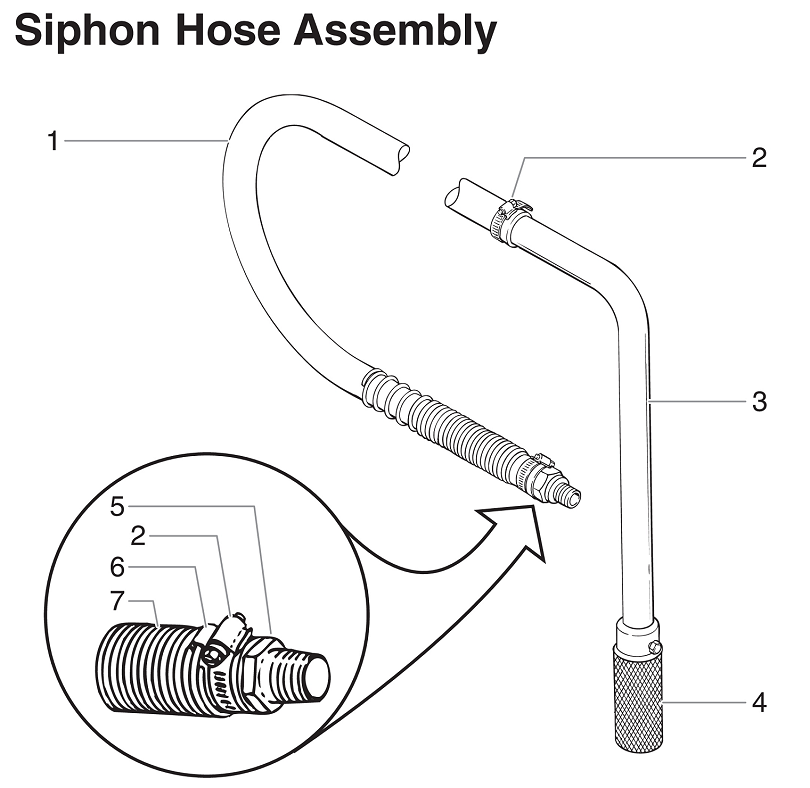A device that moves liquid from one place to another is a siphon pipe. Utilizing a pressure differential between the two regions is accomplished. There is enough of a difference for some water to begin boiling and turning into vapor. When the vapor reaches a new pressure above atmospheric pressure, it expands because it has a lower density than liquid water. The upper chamber holds the remaining water. Another name for this apparatus is a trap. Although they are made like U-shaped pipes and let waste items pass through them, traps are not siphons.
The Definition of Syphon Pipes
In a siphon hose, a device called a siphon pipe is used to transfer liquid from one place to another. A pressure differential between the two locations is used to accomplish this. Some water begins to boil and turn into vapor because of the drastic difference. The vapor expands when it reaches a new pressure above atmospheric pressure because it has a lower density than liquid water. The upper chamber is where the remaining water is stored. A trap is another name for this apparatus. Waste materials can pass via traps, which are designed like U-shaped pipes but are not siphoned.
The Security The safest method of moving liquids, such as water, is with siphon pipes. A copper siphon pipe with anti-static qualities makes up the siphon. A glass ball and a stainless steel spring are also included. The liquid is at one end of the siphon and is connected to two stainless steel vacuum taps at the other. Water is then poured into the siphon, and gravity pushes the liquid through the tube.
The height of the siphon is the vertical distance between the tube’s apex and the upper reservoir’s surface. The siphon height was 1498 cm and increased to 1504 cm during our studies. The barometric pressure was 99.8 kPa during the experiment. In video sequences 3, 4, and 5, a siphon operation is demonstrated. The lower siphon leg is where the water is exiting in video sequence 3.
Syphon Pipe Applications
A siphon pipe is a tube in which the force exerted on the water inside is higher than its weight. This is carried out because the water molecules are under equal pressure from the air at either end of the pipe. A siphon can elevate water 22 to 24 feet in this manner. A siphon, however, is not able to raise water above the level of a traditional pump.
A tank is filled with the pipe, which is positioned at a specific height above the surface H. The pressure progressively drops as the water rises until it reaches peak C. When the pressure falls below the atmospheric pressure, the liquid flow then starts. Air keeps the water afloat until it reaches a height of roughly ten meters. The liquid flow may be obstructed if there is a vortex over the pipe’s entrance.
An upside-down “U” shaped tube called a siphon enables liquid to move from a reservoir to a lower level. The liquid is under pressure when it is driven up the tube by immersion or suction. The flow continues on its own once inside. Gas explosions can be caused by siphons, which are often referred to as inverted siphons, traps, or flow tubes.
Uses For Syphon/Siphon Pipes:
These uses can also be applicable to flex sprayer.
Steam Boilers
These are linked to pressure gauges and are used to measure the water level precisely in steam boilers.
Industrial Processes
In chemical processing facilities, shield pressure instruments from intense heat.
Automotive
Protect temperature sensors in cooling systems from coolant damage.
Hydraulic Systems
Accurately gauge fluid levels without subjecting instruments to the entire hydraulic fluid force.
HVAC Systems
Protect instruments from extremely high or low temperatures while precisely measuring the pressure of refrigerants.
Water Tanks
Accurately measure the water level in hot conditions without overheating the devices.
Laboratory Equipment
Use laboratory equipment to move liquids between containers at a steady flow rate.
Oil and Gas sector
For safe operations in the oil and gas sector, measure the fluid levels and pressures in storage tanks and pipes.
Conclusion
A siphon is an inverted ‘U’ shaped tube that is used to transfer liquids between two locations without the need for external machinery or direct human assistance. Gravity and atmospheric pressure are their sources of operation. How is a siphon operated? Both air pressure and gravity are used by a siphon to function. A siphon is a device used to transfer liquid over the side of a vessel and deliver it at a lower level. It is often shaped as a tube twisted into two legs of different lengths. Siphons come in various sizes. A siphon pipe is a tube that allows water to be drawn and lifted with power greater than the water’s weight. Because the air at each end of the pipe applies equal pressure to the water molecules, this is done. This allows a siphon to raise water to 22–24 feet.

